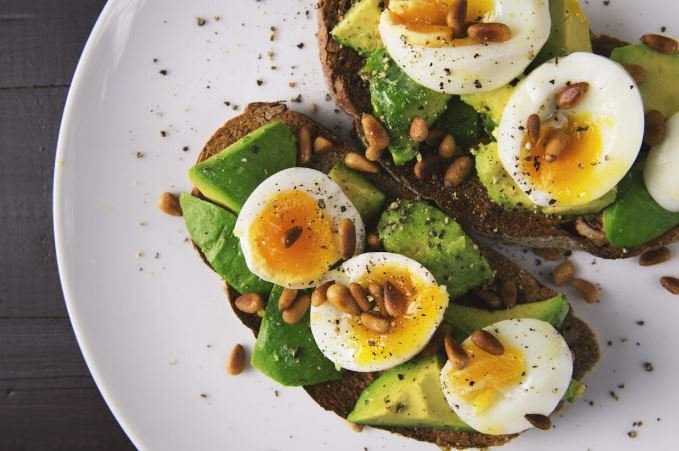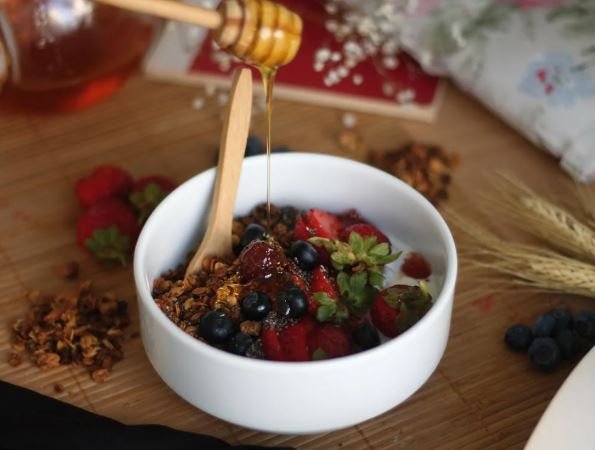Omega-3 fatty acids are essential nutrients that play a critical role in your overall health, supporting brain function, reducing inflammation, and enhancing heart health. While supplements are available, one of the best ways to ensure you’re getting an adequate amount of omega-3 is by incorporating foods rich in omega-3 into your diet. In this article, we’ll take a look at the top 7 foods rich in omega-3 that can boost your health and help you avoid common downsides. Let’s dive into these nutrient-packed foods and explore their benefits.

Why Omega-3s Matter
Before we explore the top 7 foods rich in omega-3, it’s important to understand why these fatty acids are so beneficial. Omega-3s, particularly EPA (eicosapentaenoic acid) and DHA (docosahexaenoic acid), are crucial for maintaining a healthy heart, improving cognitive function, and supporting joint health. They are also known to reduce inflammation, which is linked to various chronic diseases such as heart disease, arthritis, and even some cancers. Including these healthy fats in your diet is essential for overall well-being.
However, while omega-3 fatty acids are critical, it’s important to know that not all sources are created equal. Some omega-3-rich foods come with their own set of downsides, such as high mercury content or an imbalance with omega-6 fatty acids. It’s essential to choose wisely.
1. Fatty Fish: Salmon, Mackerel, and Sardines
Among the top 7 foods rich in omega-3, fatty fish like salmon, mackerel, and sardines are the undisputed champions. These fish are packed with EPA and DHA, two of the most beneficial forms of omega-3. Regular consumption of these fish has been linked to a reduced risk of heart disease, improved brain health, and even a reduced risk of certain cancers.
Why We Love It:
- Rich in EPA and DHA, the most effective forms of omega-3
- Easy to incorporate into various dishes, from grilling to baking
- Excellent source of high-quality protein
The Downsides:
- Some fish, especially larger species like tuna, may contain high levels of mercury
- Farmed fish may have lower levels of omega-3 and higher levels of contaminants
2. Chia Seeds
Chia seeds are another fantastic source of omega-3, particularly in the form of ALA (alpha-linolenic acid). ALA is a plant-based omega-3, which your body must convert into EPA and DHA, though this conversion process is not always efficient. However, chia seeds are also loaded with fiber and antioxidants, making them a healthy and versatile addition to your diet.
Why We Love It:
- Excellent plant-based source of omega-3
- High in fiber, protein, and antioxidants
- Easy to add to smoothies, oatmeal, or baked goods

The Downsides:
- As a plant-based source, the conversion of ALA to EPA and DHA can be limited
- May cause digestive discomfort in some people due to high fiber content
3. Walnuts
Walnuts are one of the best foods rich in omega-3 for those following a plant-based diet. Like chia seeds, walnuts provide ALA, which can be converted into the more beneficial forms of omega-3. Walnuts also support heart health, improve brain function, and offer anti-inflammatory benefits.
Why We Love It:
- Rich in ALA, a plant-based omega-3
- High in antioxidants that support overall health
- Great for snacking or adding to salads, cereals, or baked goods
The Downsides:
- High in calories, so portion control is important
- Some people may find walnuts hard to digest in large quantities
4. Flaxseeds
Flaxseeds are another excellent source of ALA, offering a potent dose of omega-3. They are also rich in fiber and lignans, which have antioxidant properties. Ground flaxseeds are more easily absorbed by the body than whole flaxseeds, and they are a great addition to smoothies, cereals, or as an egg substitute in baking.
Why We Love It:
- Rich in ALA, fiber, and antioxidants
- Helps with heart health and digestion
- Versatile and easy to add to many recipes
The Downsides:
- Like chia seeds, flaxseeds require conversion of ALA to EPA and DHA, which isn’t always efficient
- Whole flaxseeds can pass through the digestive system without being fully absorbed
5. Hemp Seeds
Hemp seeds are not only a rich source of omega-3 but also provide a good balance of omega-6 fatty acids. This makes them an excellent choice for those looking to achieve a healthy ratio of these essential fatty acids. These seeds also contain protein, fiber, and a variety of vitamins and minerals, making them a well-rounded addition to any diet.
Why We Love It:
- Provides a good balance of omega-3 and omega-6
- High in protein and essential nutrients
- Easy to add to smoothies, salads, and baked goods

The Downsides:
- Like chia and flaxseeds, hemp seeds are a plant-based source, meaning conversion of ALA to EPA and DHA may not be very efficient
- May cause digestive discomfort if consumed in excess
6. Edamame
Edamame, or young soybeans, are not only a source of protein but also contain omega-3 in the form of ALA. They are rich in vitamins and minerals, including folate, iron, and magnesium, and can help improve heart health, support muscle recovery, and promote overall well-being.
Why We Love It:
- Plant-based source of omega-3 and high in protein
- Packed with vitamins and minerals that support health
- Convenient snack or addition to salads, stir-fries, and bowls
The Downsides:
- Contains phytoestrogens, which may not be suitable for everyone
- High in lectins, which may cause digestive discomfort in some individuals
7. Krill Oil
Krill oil, derived from tiny crustaceans called krill, is one of the most potent sources of omega-3. It contains EPA and DHA in a form that is more easily absorbed by the body compared to other omega-3 sources. Krill oil is often available in supplement form, making it a convenient option for those looking to boost their omega-3 intake.
Why We Love It:
- Contains EPA and DHA in a highly absorbable form
- Known to improve heart health and reduce inflammation
- Comes in a convenient supplement form
The Downsides:
- More expensive than fish oil supplements
- Not suitable for vegetarians or vegans

While foods rich in omega-3 are essential for supporting heart and brain health, maintaining a healthy gut is just as crucial for overall well-being. A balanced gut microbiome can improve digestion, boost immunity, and even support your mental health. If you’re interested in learning more about how to enhance your gut health through diet, check out our Foods That Improve Gut Health article. It explores the best foods to nourish your gut, complementing your omega-3 intake for optimal health.
Conclusion: Boost Your Health with Omega-3-Rich Foods
Incorporating foods rich in omega-3 into your diet is a simple yet effective way to boost your health and prevent chronic diseases. From fatty fish like salmon to plant-based options like chia seeds and walnuts, there are plenty of delicious and nutritious choices to meet your omega-3 needs. While some sources may have downsides—such as mercury in fish or limited conversion of ALA to EPA and DHA in plant-based options—each of these top 7 foods rich in omega-3 offers unique health benefits. By making informed choices and incorporating a variety of omega-3-rich foods, you can optimize your health without the downsides.
So, whether you’re looking to improve your heart health, brain function, or reduce inflammation, these top 7 foods rich in omega-3 will support your journey to better health!



